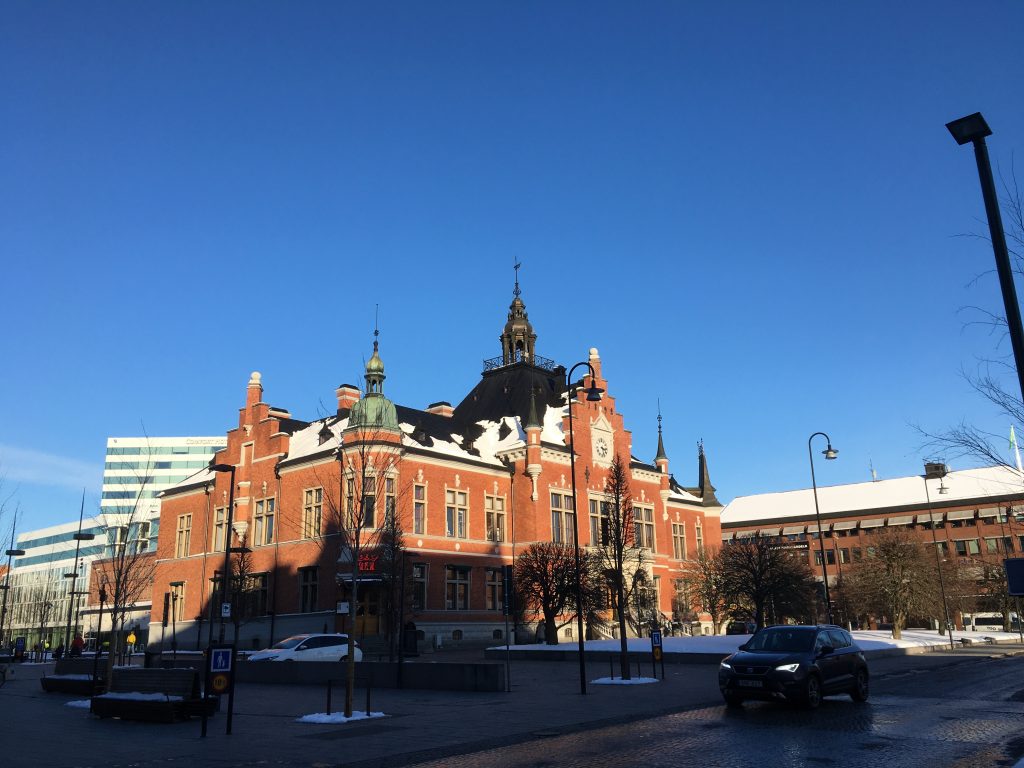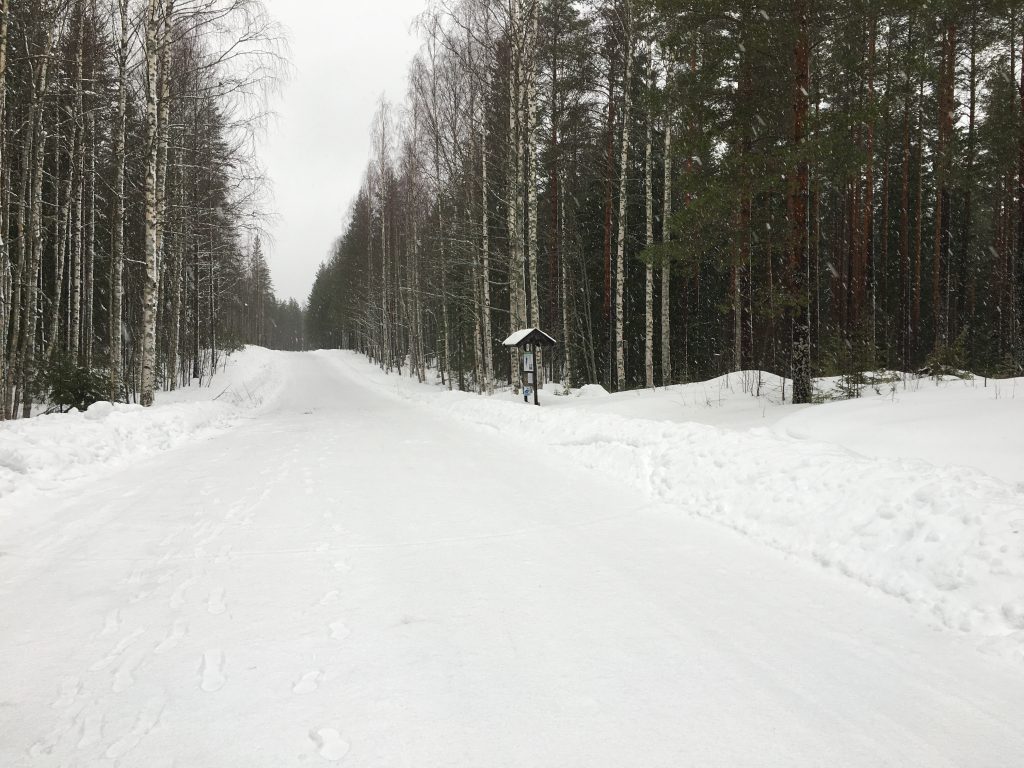Covid-19 and the Swedish Experience: Notes from Umeå, Northern Sweden
In August 2019, I moved from Galway to Umeå, northern Sweden, with my family to take up a two-year Marie Sklodowska-Curie Research Fellowship. A key part of the MSCA scheme is mobility. Little did I know that within eight months I would be working at the kitchen table, unable to travel anywhere and obsessively following the words of a man called Anders Tegnell, via Google Translate of course.

Back in long-ago early March my husband said to his colleague: ‘so, the coronavirus is in Stockholm now.’ ‘It won’t come here’ was the response, underlining the feeling that northern Sweden is quite separate from ‘the south’, where 90% of Sweden’s ten million people live. It did come here of course, direct from northern Italy’s ski resorts (yes, I too was fairly surprised that people from northern Sweden go to Italy for ski holidays).
Sweden’s response to the virus is drawing attention and criticism, but many of the measures in place in other countries are in place here, although often in a softer form. Regions are also free to introduce their own measures so it is not the same across the entire country. Schools for over 15s (gymnasium), colleges and universities switched to online learning; public gatherings over fifty people have been banned; staff at Umeå university were asked to work from home over a month ago, with meetings and teaching taking place online and travel abroad for work banned until at least the middle of June, and travel within Sweden strongly discouraged. In general, it’s easier to keep your distance in Umeå; PhDs have their own offices (I know!) for example and many young adults live individually in apartments whereas in Ireland it’s common to live in a shared house. This difference in housing and low population density in many parts of Sweden, particularly in the north, will play a large role in slowing the spread of the virus. Another striking difference between Galway and Umeå (cities of a similar size) is that Umeå probably has 10-20% the number of bars and pubs of Galway.
The biggest difference for us is that primary schools, seen as essential services that enable parents to work, have remained open (much to my eleven-year-old daughter’s outrage), although anyone with even slight cold symptoms must stay home, pupils are told to sit a metre apart (I’m told it only lasted a day), and parents have been asked not to enter the school building. Primary school closures may still happen and the time missed might have to be made up (at weekends or in summer – the horror!). There are only seven weeks of school left after the Easter break and we have been poised for them to close. A parent with a child under the age of twelve will not be expected to be able to work (even from home) if this happens and will instead be compensated by the state with a large percentage of their salary.
At the moment, deciding to keep a healthy child at home while schools are open might end up in a quagmire of red tape and calls from social services. Some parents are keeping children home anyway, particularly in Stockholm, a major epicentre of the virus that has a much higher rate of infection than where we are. All other extra-curricular indoor activities for children stopped in mid-march (indoor play centres are closed and library events cancelled), but some outdoor activities for children still go ahead. We are lucky that we are so close to nature and you can easily walk into the forest and see no one.

There are also far more safe places to walk, cycle and enjoy nature here than in Galway so you will rarely see the same amount of crowding in natural spaces. Apart from that, our only outing is to the supermarket so our world has shrunk considerably!
The concept of social distancing only seems to be getting emphasis recently, and although there are now lines of tape marking how far apart people should queue at the supermarket, it looked like a lot of people weren’t taking it seriously. However, soap is in short supply and it took us weeks to find hand sanitizer. At school there is a lot of emphasis on hand washing, with long queues for the sinks apparently. Some restaurants, bars, cinemas and shops have closed and most major ski resorts shut down before Easter. People were asked not to travel over the holiday and this was mostly respected I think. Like in Ireland, many people have lost their jobs and life is certainly not continuing as normal. Yes, I can go more than 2km from the house, but no, I can’t really go anywhere else. Although my family tends more towards an Irish-style response, at a rare visit to a shopping mall this weekend it was evident that some restaurants were making almost no effort to comply with the social distancing regulations and people were not keeping their distance from each other.
There was a lot of talk about personal responsibility here and measures have been introduced in a very gradual (and sometimes unclear) manner. This seems to have had the effect that the situation wasn’t taken seriously soon enough. Anders Tegnell, the State Epidemiologist, is in the news incessantly – he’s become quite the celebrity; I couldn’t tell you what the king of Sweden looks like but I’ve seen Anders from every angle at this stage, no matter how much I try to avoid him! Many here are critical of his tactics and Sweden has a far higher death rate than its Nordic neighbours. He recently said that people should not expect to be able travel outside Sweden until perhaps May 2021, which was a little panic-inducing when you haven’t been here very long! In short, life here is nowhere near ‘normal’ and the uncertainty of the situation, as well as the fact that the possibilities for social contact have been greatly reduced, makes it hard to be here right now.
Eavan O Dochartaigh
Dr Eavan O’Dochartaigh is a Marie Skłodowska-Curie Postdoctoral Fellow based at Humlab (Digital Humanities Centre) and Arcum (Arctic Research Centre) in Umeå University. Her current project gathers and maps nineteenth-century visual representations of indigenous people in the western Arctic. She is a recent graduate (2018) of the Department of English at National University of Ireland, Galway, where her PhD thesis examined the visual culture created by the exploration of the Northwest Passage in the 1850s, and is a graduate of the MPhil in Polar Studies at the Scott Polar Research Institute, University of Cambridge (2005). Additionally, she has over ten years of experience as a consultant archaeologist and illustrator, working in Ireland, the UK, and Iceland.

